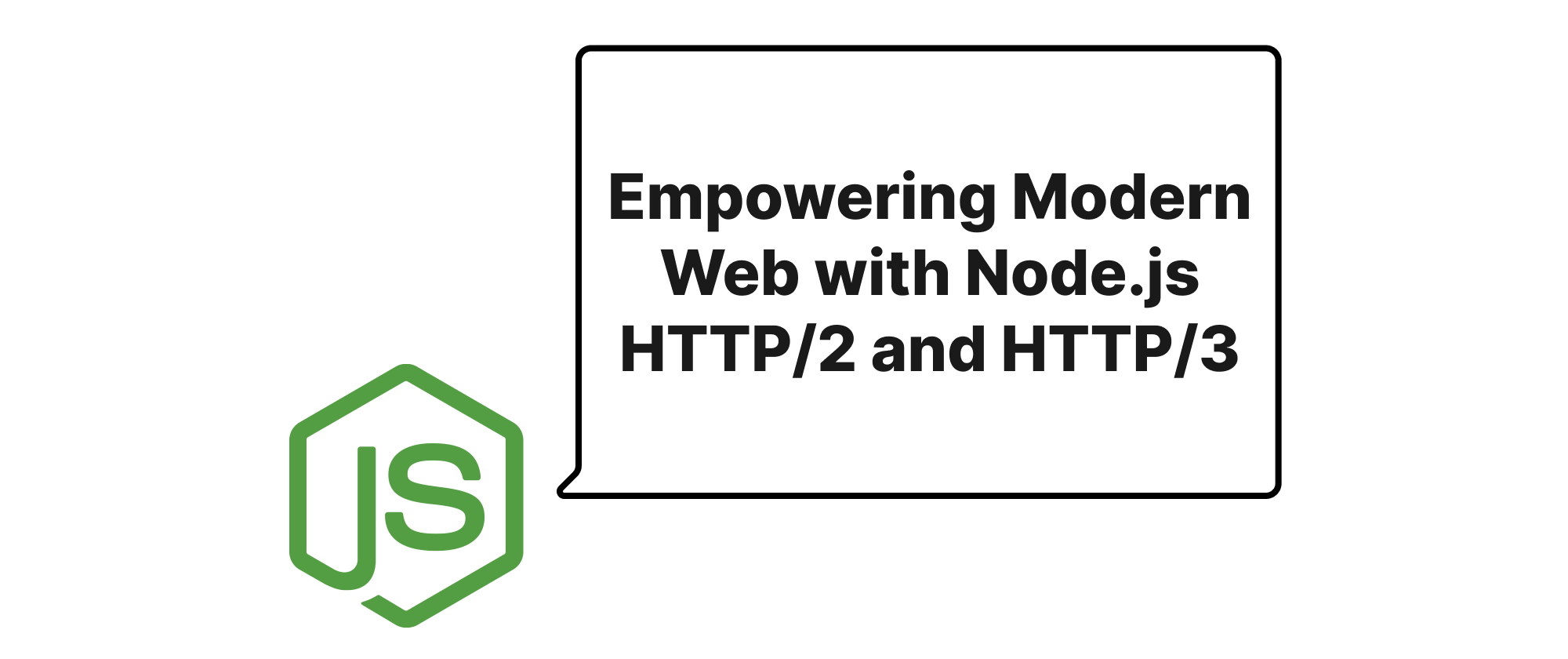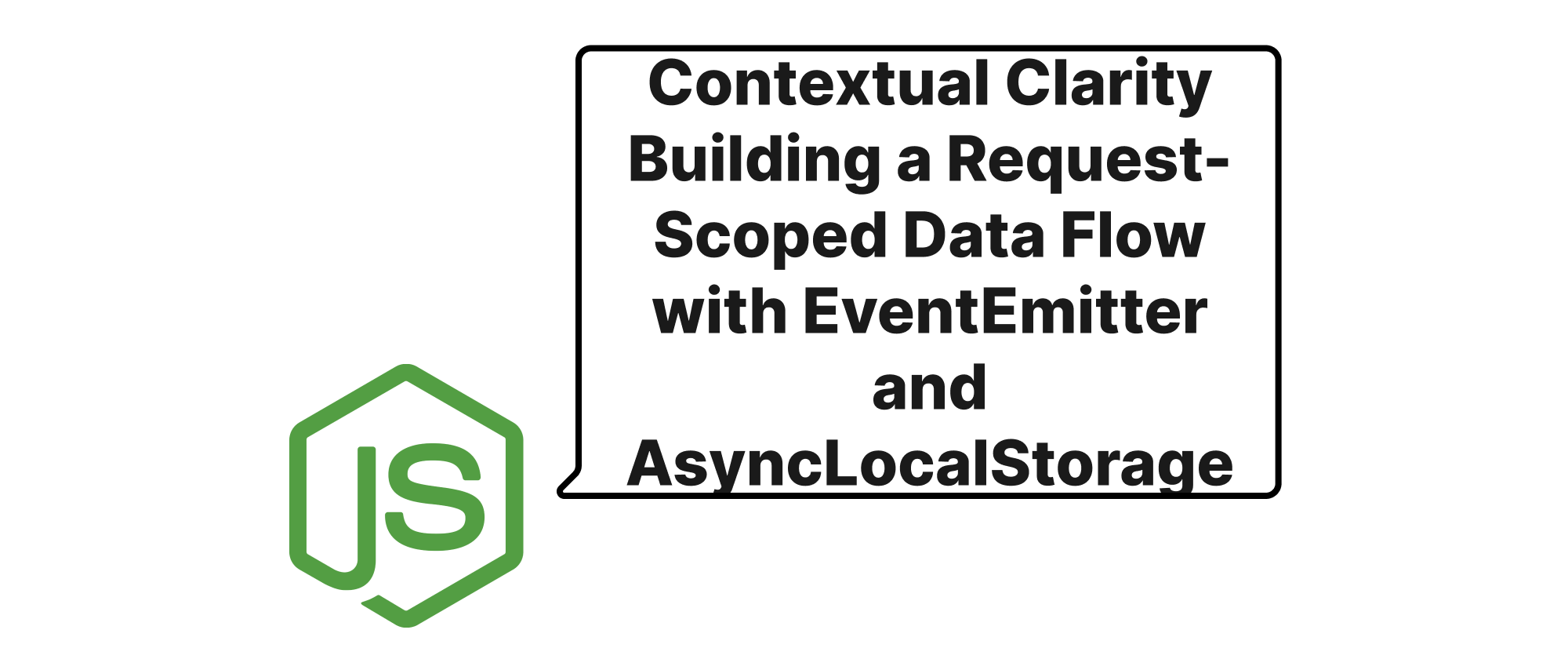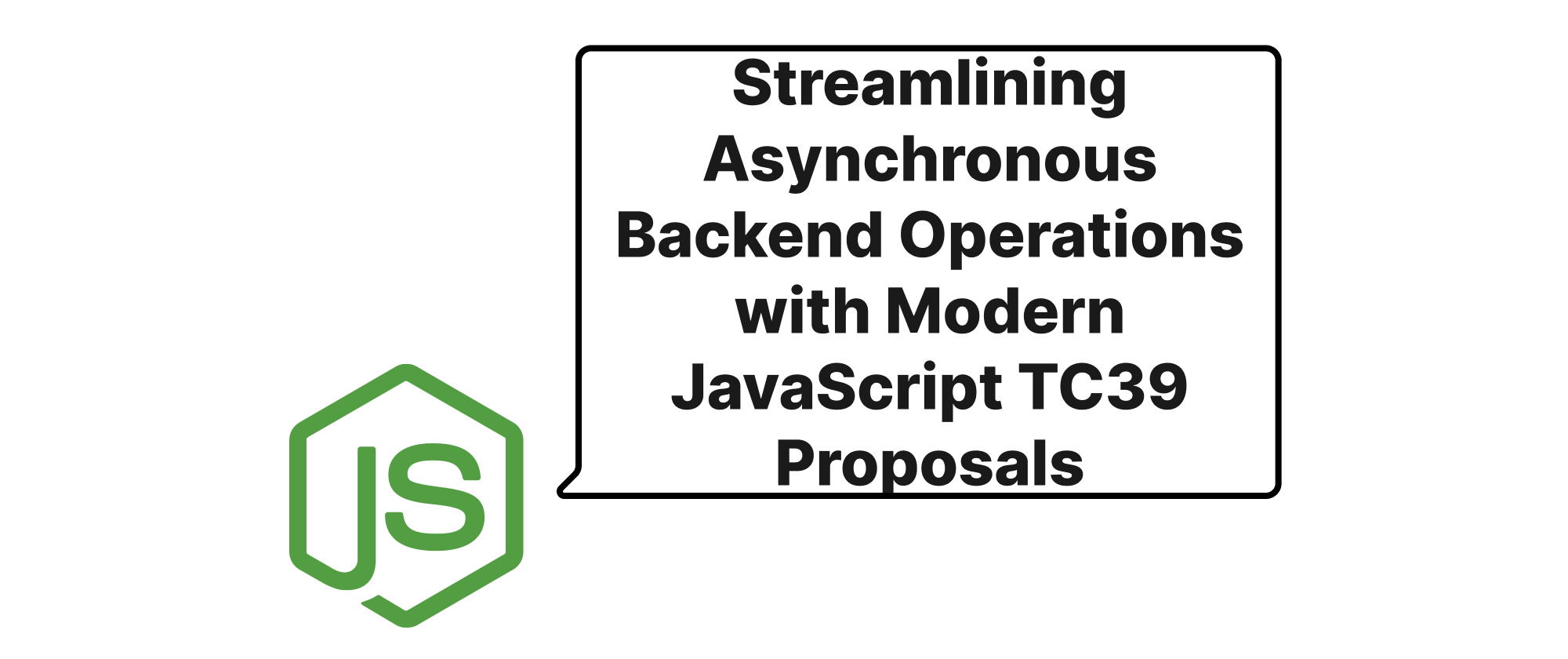Empowering Modern Web with Node.js HTTP/2 and HTTP/3
Wenhao Wang
Dev Intern · Leapcell

Introduction
The web's evolution has been a relentless pursuit of speed and efficiency. From the early days of HTTP/1.x, which, despite its simplicity, introduced significant bottlenecks like head-of-line blocking, we've continually strived for better performance metrics. This drive has led to the development of cutting-edge protocols like HTTP/2 and HTTP/3 (QUIC). For JavaScript developers working with Node.js, understanding and leveraging these protocols is no longer an optional skill but a critical aspect of building responsive and scalable web applications. HTTP/2 and HTTP/3 offer substantial performance benefits—faster page loads, reduced latency, and improved mobile experiences—which directly translate into better user engagement and operational efficiency. This article delves into Node.js's inherent support for these advanced protocols, exploring their underlying mechanisms, practical implementations, and real-world applications, enabling developers to unlock the full potential of modern web communication.
Understanding Modern Web Protocols
Before diving into Node.js's specifics, let's briefly define the core protocols we'll be discussing:
-
HTTP/1.1: The foundational protocol, widely used but known for its inefficiencies. It processes requests sequentially, leading to "head-of-line blocking" where a slow response can delay subsequent requests over the same connection. Each resource (images, scripts, CSS) often requires a separate TCP connection, incurring significant overhead.
-
HTTP/2: Introduced to address HTTP/1.1's shortcomings without breaking its core semantics. Key features include:
- Multiplexing: Allows multiple requests and responses to be sent concurrently over a single TCP connection, eliminating head-of-line blocking at the application layer.
- Server Push: The server can proactively send resources to the client that it anticipates the client will need, reducing round-trip times.
- Header Compression (HPACK): Reduces overhead by compressing HTTP headers, which are often repetitive.
- Prioritization: Clients can signal which resources are more critical, allowing the server to prioritize delivery.
- Binary Framing Layer: HTTP/2 operates on a binary protocol, making it more efficient to parse and transmit than its text-based predecessor.
-
HTTP/3 (QUIC): The latest iteration of HTTP, built on top of QUIC (Quick UDP Internet Connections) instead of TCP. This fundamental shift brings several advantages:
- UDP-based: Bypassing TCP's inherent limitations, especially regarding head-of-line blocking at the transport layer. If one packet is lost, it only affects the stream it belongs to, not all other streams on the connection.
- Integrated TLS 1.3 Encryption: QUIC encrypts almost all its headers, providing better privacy and security, and integrates the TLS handshake into the connection establishment, resulting in faster connection setup.
- Reduced Latency Connection Establishment: Achieves 0-RTT (zero round-trip time) or 1-RTT connections for subsequent and initial connections, respectively, significantly speeding up initial page loads.
- Improved Connection Migration: Connections can persist across IP address changes (e.g., switching from Wi-Fi to cellular), providing a smoother user experience.
Node.js Support for HTTP/2 and HTTP/3
Node.js offers robust native support for both HTTP/2 and HTTP/3, allowing developers to leverage these protocols with minimal external dependencies.
HTTP/2 in Node.js
Node.js has had native HTTP/2 support since version 8.8.1, available through the built-in http2 module. It can operate in two modes:
- Secure (HTTPS/2): The most common and recommended way, leveraging TLS for encryption.
- Insecure (HTTP/2 with prior knowledge): Less common and typically for specific local or internal network setups where TLS overhead is explicitly avoided.
Let's look at an example of creating a simple HTTP/2 server.
// server.js const http2 = require('http2'); const fs = require('fs'); // We need server certificates for secure HTTP/2 const options = { key: fs.readFileSync('server.key'), cert: fs.readFileSync('server.cert'), }; const server = http2.createSecureServer(options); server.on('stream', (stream, headers) => { const path = headers[':path']; console.log(`Request received for: ${path}`); if (path === '/') { // Server Push example: Push CSS before the HTML is fully sent stream.pushStream({ ':path': '/style.css' }, (err, pushStream) => { if (err) throw err; pushStream.writeHead(200, { 'Content-Type': 'text/css' }); pushStream.end('body { font-family: sans-serif; background-color: #f0f0f0; }'); console.log('Pushed /style.css'); }); stream.writeHead(200, { 'Content-Type': 'text/html' }); stream.end(` <html> <head> <title>Node.js HTTP/2 Server</title> <link rel="stylesheet" href="/style.css"> </head> <body> <h1>Welcome to HTTP/2!</h1> <p>This page was served over HTTP/2, with CSS pushed by the server.</p> </body> </html> `); } else if (path === '/style.css') { // This block might not be hit if the client doesn't explicitly request /style.css // after it's been pushed, or if the client chooses to ignore the push. stream.writeHead(200, { 'Content-Type': 'text/css' }); stream.end('body { font-family: sans-serif; background-color: #f0f0f0; }'); console.log('Served /style.css (explicitly)'); } else { stream.writeHead(404); stream.end('Not Found'); } }); server.on('error', (err) => console.error(err)); server.listen(8443, () => { console.log('HTTP/2 server listening on https://localhost:8443'); console.log('Generate self-signed certs first:'); console.log('openssl genrsa -out server.key 2048'); console.log('openssl req -new -x509 -key server.key -out server.cert -days 365'); });
To run this, you'll need self-signed SSL certificates (server.key and server.cert). You can generate them using OpenSSL:
openssl genrsa -out server.key 2048 openssl req -new -x509 -key server.key -out server.cert -days 365
When you access https://localhost:8443 in a modern browser, you'll observe that /style.css is often downloaded before the browser explicitly requests it, thanks to server push.
HTTP/3 (QUIC) in Node.js
Node.js introduced experimental support for HTTP/3 (QUIC) in Node.js 15. The quic module (part of node:quic) provides the primitives for building QUIC applications, including HTTP/3. As of Node.js 18 and newer, the QUIC implementation is more mature, though still often marked as experimental or requiring a flag.
The API for HTTP/3 in Node.js is built on top of the node:quic module and mirrors some aspects of the http2 module, dealing with sessions and streams. Because QUIC is UDP-based, the setup differs slightly from TCP-based (http and http2) servers.
Here's a basic example of an HTTP/3 server. Note that QUIC is always encrypted by default, so certificates are mandatory.
// server-quic.js const { createQuicSocket } = require('node:quic'); const fs = require('fs'); const key = fs.readFileSync('server.key'); const cert = fs.readFileSync('server.cert'); const server = createQuicSocket({ type: 'udp4', // IPv4 transport port: 8443, lookup: (hostname, options, callback) => { // Custom lookup for localhost callback(null, [ { address: '127.0.0.1', family: 4, hostname: 'localhost' } ]); } }); // Configure the QUIC server to listen for new sessions server.listen({ key, cert, alpn: 'h3', // Application Layer Protocol Negotiation for HTTP/3 maxConnections: 1000, requestCert: false, rejectUnauthorized: false }) .then(() => { console.log('HTTP/3 server listening on quic://localhost:8443'); }); server.on('session', (session) => { console.log(`QUIC Session established from ${session.remoteAddress}:${session.remotePort}`); session.on('stream', (stream) => { // Read the HTTP/3 request headers stream.on('data', (data) => { // In a real H3 implementation, you'd parse ALPN frames and HTTP/3 headers // This is a simplified example. Actual H3 parsing is more complex. console.log(`Received data on stream ${stream.id}: ${data.toString()}`); }); stream.on('end', () => { // For a simple response stream.write('Hello from Node.js HTTP/3!'); stream.end(); console.log(`Stream ${stream.id} ended`); }); stream.on('error', (err) => console.error(`Stream error: ${err.message}`)); }); session.on('close', () => { console.log('QUIC Session closed'); }); session.on('error', (err) => console.error(`Session error: ${err.message}`)); }); server.on('error', (err) => console.error(`QUIC Socket error: ${err.message}`));
Note: Interacting with an HTTP/3 server client-side is more complex. Standard browsers today might not easily connect to a custom HTTP/3 server without specific configuration or proxying. Tools like curl (with QUIC support and --http3 flag) are more suitable for testing. The example above demonstrates the server setup, but the actual HTTP/3 request/response parsing on the stream data event would involve decoding HTTP/3 frames (SETTINGS, HEADERS, DATA, etc.), which is beyond a simple stream.write/end call. For a full HTTP/3 implementation, you'd typically use a higher-level library built on node:quic or wait for http3 module development if Node.js decides to provide a higher-level API directly. For now, the node:quic module provides the foundational layer.
Application Scenarios
Leveraging these protocols can significantly boost various types of applications:
- Single Page Applications (SPAs): HTTP/2's multiplexing and server push are ideal for SPAs with many small assets (JS, CSS, images). Pushing critical assets can dramatically reduce perceived load times.
- Real-time Dashboards/APIs: HTTP/2's bi-directional streaming is beneficial for real-time updates without the overhead of WebSockets in some scenarios, especially when request/response semantics are still desired.
- Microservices Communication: Within a microservices architecture, HTTP/2 can provide more efficient internal communication between services compared to HTTP/1.1, especially over long-lived connections.
- Mobile Clients: HTTP/3's connection migration and 0-RTT/1-RTT connections are a game-changer for mobile clients, which often experience fluctuating network conditions and frequent disconnections/reconnections. The reduced connection setup time is particularly valuable.
- Content Delivery Networks (CDNs): CDNs are early adopters of HTTP/3 due to its ability to improve global content delivery speed and reliability. Node.js applications interacting with or acting as parts of CDNs can leverage this.
Conclusion
Node.js's native support for HTTP/2 and HTTP/3 (QUIC) equips developers with powerful tools to build high-performance, resilient, and future-proof web services. By understanding and strategically applying the features of multiplexing, server push, header compression, and QUIC's UDP-based architecture with integrated TLS, developers can significantly enhance user experience, reduce latency, and optimize resource utilization. Embracing these modern protocols is paramount for staying competitive in today's fast-paced digital landscape, ensuring your applications deliver content faster and more reliably than ever before. The future of the web is faster and more secure, and Node.js is ready to lead the way.


